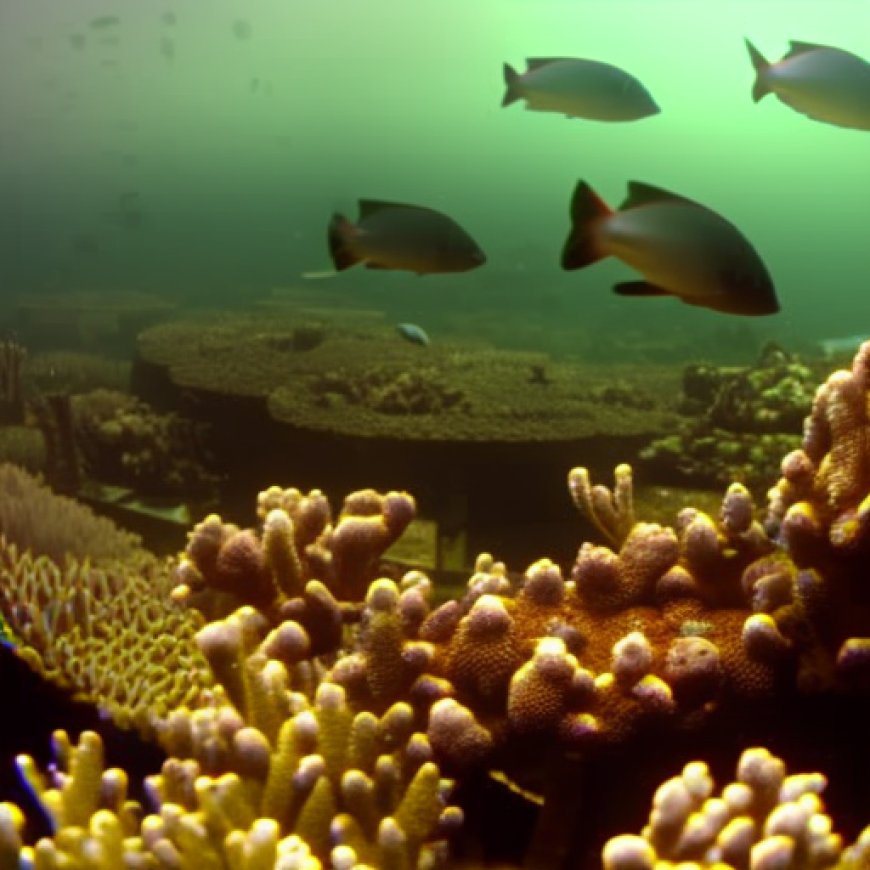Marine Research Institute scientists: Baltic Sea fish stocks are in dire state
Marine Research Institute scientists: Baltic Sea fish stocks are in dire ... EN DELFI


Fish Stocks in the Baltic Sea: A Concerning State
Introduction
- Fishermen in the interwar period recall abundant fish hauls and sightings of porpoises near the Palanga Bridge.
- The Baltic Sea has undergone significant changes, as evidenced by both historical accounts and scientific observations.
The Alarming State of Baltic Sea Fish Stocks
- Researchers from Klaipėda University Marine Research Institute, Nerijus Nika, Tomas Zolubas, and Marijus Špėgys, highlight the deteriorating condition of valuable fish populations in the Baltic Sea.
- Over the past century, fish stocks have declined, and the fish themselves have decreased in size.
- Commercial fishing is a major contributing factor, along with climate change and marine pollution.
The Concern for Baltic Sea Cod Stocks
- Scientists express particular concern about the state of Baltic Sea cod stocks.
- Fishing for the eastern cod stock has been suspended since 2020 due to its critical condition, but there has been no sign of recovery.
- Oxygen-depleted dead zones, caused by eutrophication, have expanded, resulting in fewer suitable spawning and feeding grounds for fish.
- Poor growth of cod stocks may also be attributed to deteriorating nutritional conditions and the spread of parasites.
Eutrophication and Dead Zones
- Eutrophication, characterized by increased levels of nitrogen and phosphorus in the water, leads to the formation of oxygen-deficient dead zones in the Baltic Sea.
- Excessive algae growth consumes oxygen, creating a scarcity of this essential element for animal respiration.
- Algae accumulations on coasts cause unpleasant smells for beachgoers.
The Impact of Contaminants on the Baltic Sea Ecosystem
- Nitrogen and phosphorus compounds, originating from agricultural fertilizers and wastewater, contribute to eutrophication.
- Various pollutants, including banned substances like DDT, dioxins, heavy metals, and pharmaceuticals, enter the sea through surface waters.
- Contaminants not only harm fish but also negatively affect the entire Baltic Sea ecosystem and can even reach humans through food chains.
An Expedition to Address the Baltic Sea’s Problems
- In March 2024, G. Bučas and his team will embark on the “Save the Baltic Sea” expedition.
- The expedition aims to observe the sea’s issues, capture local community experiences, and facilitate dialogue among scientists, NGOs, and government representatives.
Efforts to Preserve the Baltic Sea
- The Baltic Sea countries have committed to agreements such as the Baltic Sea Action Plan by HELCOM.
- However, actions to save the sea are progressing slower than necessary.
Conclusion
Giedrius Bučas, the leader of the expedition, emphasizes the need for collective action to preserve the vitality of the Baltic Sea for future generations.
SDGs, Targets, and Indicators in the Article
1. Which SDGs are addressed or connected to the issues highlighted in the article?
- SDG 14: Life Below Water – This goal focuses on conserving and sustainably using the oceans, seas, and marine resources.
- SDG 15: Life on Land – This goal aims to protect, restore, and promote sustainable use of terrestrial ecosystems, sustainably manage forests, combat desertification, and halt biodiversity loss.
2. What specific targets under those SDGs can be identified based on the article’s content?
- SDG 14.4: By 2020, effectively regulate harvesting and end overfishing, illegal, unreported, and unregulated (IUU) fishing, and destructive fishing practices and implement science-based management plans, in order to restore fish stocks in the shortest time feasible.
- SDG 15.1: By 2020, ensure the conservation, restoration, and sustainable use of terrestrial and inland freshwater ecosystems and their services, in particular forests, wetlands, mountains, and drylands, in line with obligations under international agreements.
3. Are there any indicators mentioned or implied in the article that can be used to measure progress towards the identified targets?
- Indicator for SDG 14.4: Fish stocks decline and shrinking fish size in the Baltic Sea.
- Indicator for SDG 15.1: Expansion of oxygen-depleted dead zones in the Baltic Sea.
Table: SDGs, Targets, and Indicators
| SDGs | Targets | Indicators |
|---|---|---|
| SDG 14: Life Below Water | Target 14.4: By 2020, effectively regulate harvesting and end overfishing, illegal, unreported, and unregulated (IUU) fishing, and destructive fishing practices and implement science-based management plans, in order to restore fish stocks in the shortest time feasible. | Fish stocks decline and shrinking fish size in the Baltic Sea. |
| SDG 15: Life on Land | Target 15.1: By 2020, ensure the conservation, restoration, and sustainable use of terrestrial and inland freshwater ecosystems and their services, in particular forests, wetlands, mountains, and drylands, in line with obligations under international agreements. | Expansion of oxygen-depleted dead zones in the Baltic Sea. |
Behold! This splendid article springs forth from the wellspring of knowledge, shaped by a wondrous proprietary AI technology that delved into a vast ocean of data, illuminating the path towards the Sustainable Development Goals. Remember that all rights are reserved by SDG Investors LLC, empowering us to champion progress together.
Source: delfi.lt

Join us, as fellow seekers of change, on a transformative journey at https://sdgtalks.ai/welcome, where you can become a member and actively contribute to shaping a brighter future.







